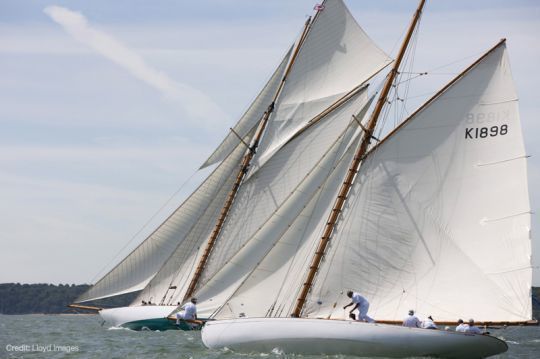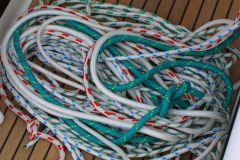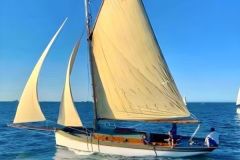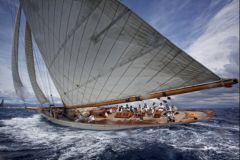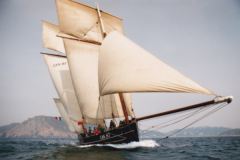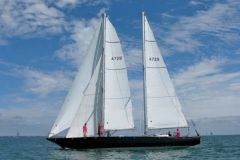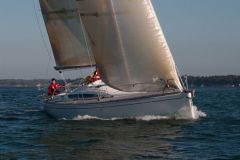The birth of the first yacht designer of the line
In 1770, John Fyfe, a wheelwright, settled in Fairlie, a village on the west coast of Scotland. Father of 6 children, he passed on his know-how to them, but the eldest, John, preferred the construction of small fishing boats. William, born in 1785, was very interested and decided to build a small rowing boat in order to study the boats that ply the Clyde. Hardly built, the small boat was bought by a client. The second boat followed the same path and sealed William's fate as a boat designer, the first of the name Fife (the original name Fyfe was changed to Fife), and the first of a generation of three brilliant designers.
A small shipyard in Fairlie specialized in the construction of fishing and work boats
In 1803, at the age of 18, he founded a small shipyard on the beach at Fairlie. At that time, the British yachting industry was in full swing, but the young man preferred to design fishing and working boats, an activity he kept until the arrival of his son William II at the shipyard, who turned to yachting in 1848.
William Fife I quickly made a reputation for himself and when the opportunity arose, he nevertheless designed a few boats for yachtsmen. It was the construction of the 6-ton cutter Comet (1807) that made him known to the yachtsmen of the time. In 1812, he built his first large yacht, the 50-ton yawl Lamlash. His business was flourishing, and he refused to enter the steamer market. The year 1821 was marked by the birth of his son William II.
In 1831, he participated in the construction of a prao euros for which he drew the sail plan euros but the boat was a failure. The following year, he designed a 60-foot catamaran for the same owner. That same year, he also designed Gleam, a 30-ton cutter. Her first race was disappointing, but thanks to regular modifications made by the architect, the racer skippered by Charlie Barr three years later won several prizes. Elegant and sleek, she symbolized the Fife trademark.
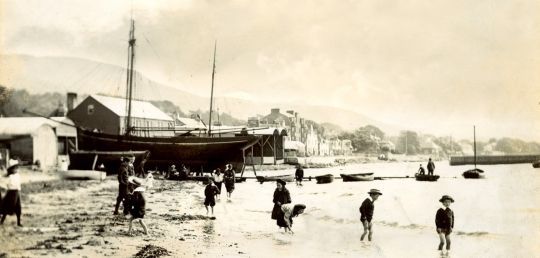
The arrival of William Fife II in the shipyard and the turn towards yachting
In 1834, William II joined his father in the shipyard as an apprentice. In 1839, his father, nicknamed "Auld Wull", entrusted him with the "yachting" part of the business, for which he drew up plans in parallel with his carpentry work. He took the reins of the shipyard in 1844 and launched his first yacht, an 8-ton cutter named Midge. It was after the launch of his 4th design, the cutter Stella in 1848, that the shipyard took the definitive turn towards yachting. This change of direction marked the beginning of the Fife prosperity.
In 1852, the launch of the 53-ton cutter Cymba established the reputation of William Fife II thanks to his numerous victories at Cowes. In 1858, the family business was prosperous and took the official name of William Fife & Son, recognized among the most prestigious until 1940. In turn, William II became father of William Junior (William Fife III) in 1857, the third William of the family and the last architect of the saga.
William II continued to create incredible yachts, and accumulated numerous victories. In 1863, he designed the 80-ton cutter Fiona, his 60 e a pleasure boat since 1844, which for 6 years dominated all its opponents.
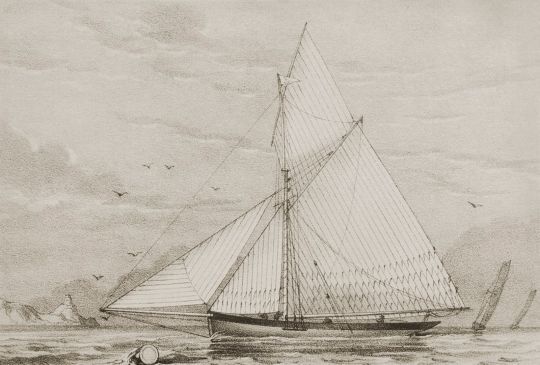
William Fife III, the most renowned of the Fife line
In 1871, William Fife III, passionate about the science of naval architecture, began his apprenticeship alongside his father. The reputation of the shipyard was well established and orders were pouring in.
In 1872, he joined a design office in East Fairlie and learned the new techniques of composite construction, combining metal structures and wooden planks. He then took over the management of a shipyard in Maidens, where he built large yachts up to 150 feet. His first success came with the design of Clara, a composite cutter measuring 19.35 m in length with a very small beam of 2.74 m, as required by the British rules in force at the time.
In 1875 he was entrusted by his father with the design department of the family shipyard. William II designed his last boat in 1887, the 2-rater cutter Ayrshire, before dying at the age of 81 in 1902.
In 1888, he signed the current fame of the Fife name by designing the 20-rater Dragon and by affixing what will become the Fife signature: a carved and gilded bow dragon. The gold sloop was launched in 1889 and won its first victory. At the end of the season, it had won 23 races. One year later, four new Dragons were added to the fleet, but the first one remained unchallenged.
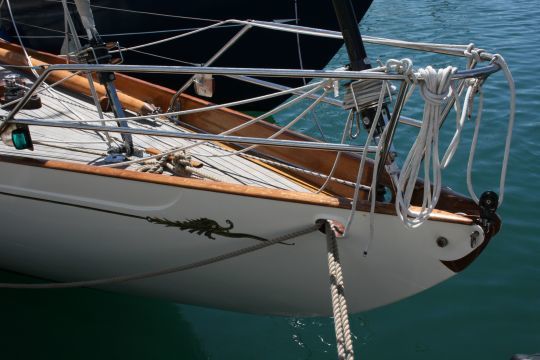
In 1891, Dragon II followed in the footsteps of his big brother, while Dragon III did even better! These victories established the reputation of William Fife III, who would become the most famous Fife of the line.
In 1902, he hired his nephew (he never had children) Robert Balderson as an apprentice and entrusted him with the finishing of his designs. In 1917, he made him his partner and in 1920, he co-signed his uncle's plans.
In total, William Fife III designed nearly 800 yachts of which at least 600 were built in Fairlie. Today, a third of his designs are still sailing. He designed two America's Cup yachts, Shamrock in 1899 and Shamrock II in 1903, which did not win the famous Cup, before building numerous yachts in the 15 M JI and 19 M JI classes. Pen-Duick, which belonged to the famous Eric Tabarly, is also a Fife design (ex-Yum in 1898).
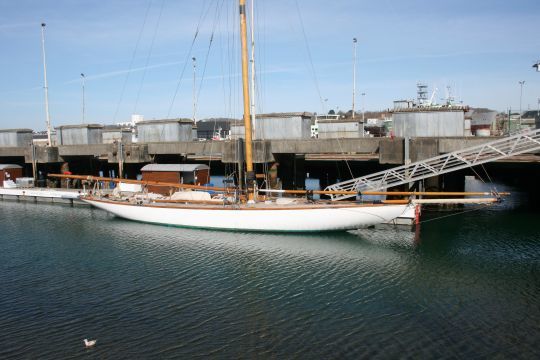

The architect died in 1944, and his nephew continued to manage the building site, which never achieved the fame it had previously enjoyed.
